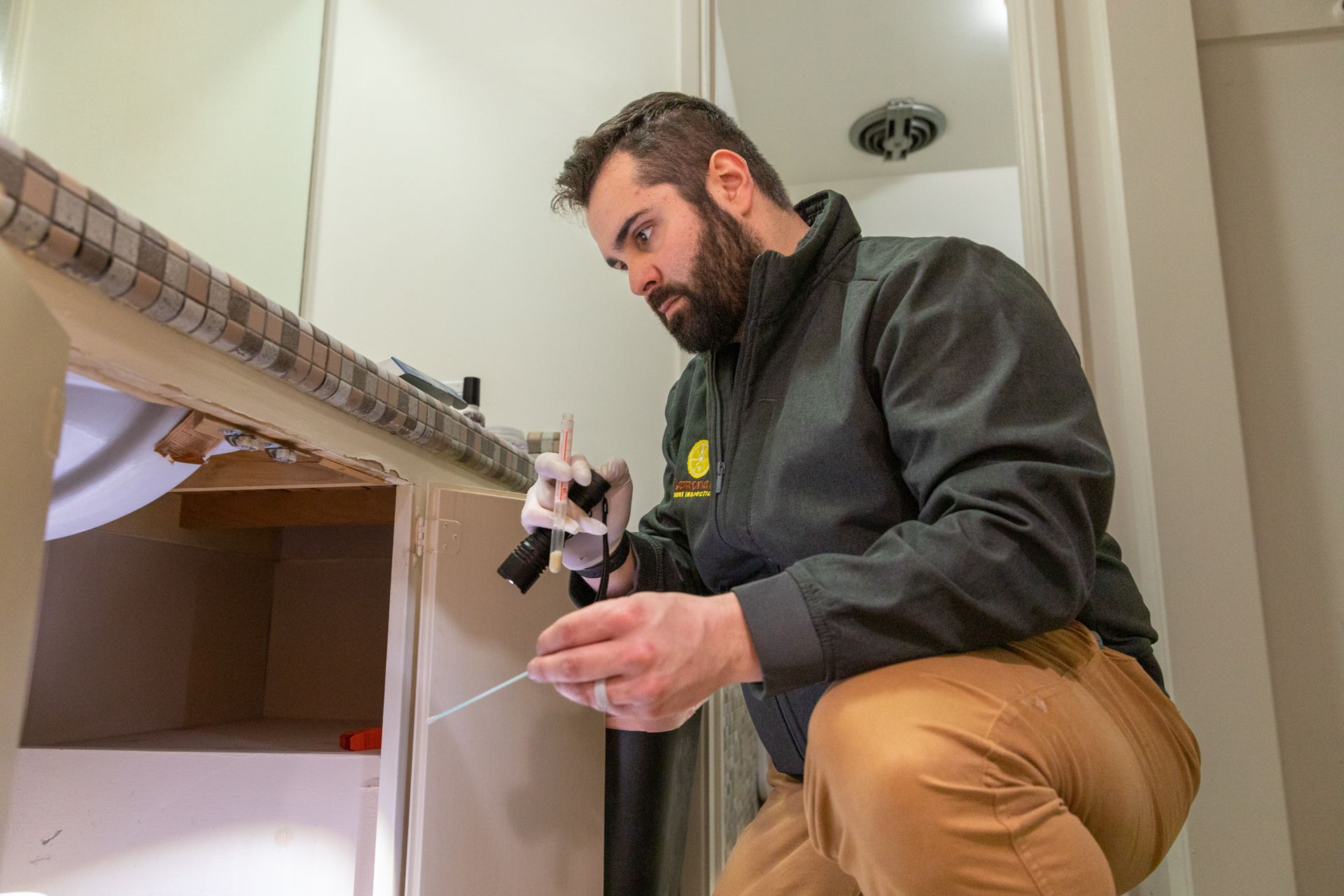Ohio's unpredictable weather patterns, ranging from heavy rainstorms to flash floods, can pose significant risks to homeowners. The state’s susceptibility to periods of intense rainfall, particularly in areas near rivers or low-lying regions, makes water damage a genuine concern. As a homeowner, preventing water damage is crucial for maintaining the value of your property and ensuring its long-term durability. Additionally, water-related issues are one of the main concerns during home inspections, and unaddressed problems can lead to costly repairs.
Why Water Damage is a Concern in Ohio
Ohio experiences all four seasons in full force, including heavy rains in the spring and summer, coupled with potential snowmelt in winter and early spring. This can result in water intrusion in homes, particularly those with older foundations or poor drainage systems. Low-lying areas and homes near rivers, like those in flood-prone regions of Ohio, are especially vulnerable. When left unchecked, water damage can lead to mold growth, structural issues, and deterioration of your home’s value.
Preventing Water Damage in Ohio Homes
Prevention is the best way to avoid the stress and financial burden of water damage. Here are some critical steps Ohio homeowners can take to protect their property:
1. Maintain Proper Drainage
- Gutter and Downspout Maintenance: Ensure gutters are clear of debris and downspouts direct water at least 5-10 feet from the foundation. This helps prevent pooling water around the house, which can lead to basement flooding and foundation issues.
- Proper Grading: The soil around your home should slope away from the foundation. This prevents water from pooling near your home's base and seeping into the basement or crawl space.
2. Seal Foundation Cracks
- Inspect the Foundation: Check for cracks in the foundation or basement walls. Even tiny cracks can let water seep in. Repair them with waterproof sealants or consult a professional if you notice significant gaps.
3. Install a Sump Pump
- Basement Flood Protection: For homes in areas prone to flooding, installing a sump pump in the basement is an effective way to divert water. Ensure the sump pump has a backup battery in case of power outages during storms.
4. Maintain Your Roof
- Check for Damage: Ensure that the roof is in good condition with no missing or damaged shingles, which can allow water to enter the home. Regular inspections, especially after major storms, can help catch roof issues early.
5. Protect the Basement
- Waterproofing: Consider waterproofing your basement if you live in an area with frequent flooding. Installing vapor barriers and applying waterproof sealants to walls and floors can help keep water out.
- Install Window Well Covers: Basements with below-grade windows are vulnerable to water intrusion. Installing window well covers can prevent water from accumulating around these windows during heavy rain.
6. Ensure Proper Landscaping
- Plant Smart: Large trees and shrubs planted too close to the house can cause water to pool near the foundation, especially if the roots interfere with drainage systems. Plant trees and shrubs farther away from the house or install root barriers.
What Inspectors Look For During Water Damage Inspections
During a home inspection in Ohio, particularly in regions prone to water issues, inspectors pay close attention to signs of past or present water damage. Here’s what they typically look for:
1. Foundation and Basement
- Cracks and Seepage: Inspectors will look for cracks in the foundation, basement walls, or floors. Even small cracks can indicate more significant water problems. Signs of water seepage, stains, or mold in the basement are key indicators of past flooding or leaks.
- Dampness or Musty Smell: A damp basement or a musty odor suggests poor ventilation and possible water intrusion. Moisture readings might be taken to confirm the level of humidity.
2. Roof and Attic
- Roof Leaks: Inspectors will look for water stains or signs of previous leaks in the attic and ceilings. They will also assess any signs of roof damage, such as missing shingles.
- Ventilation Issues: Poor ventilation in the attic can cause moisture buildup, leading to mold and structural damage over time. Inspectors will ensure the attic is adequately ventilated to prevent condensation and water damage.
3. Gutters and Downspouts
- Clogging or Overflow: Inspectors will check whether gutters are clean and functioning properly, directing water away from the home’s foundation. Downspouts that are too short or clogged can cause water to pool near the house, contributing to foundation damage or basement flooding.
4. Siding and Windows
- Leaks Around Windows and Doors: Poorly sealed windows or doors can allow water to seep into the house, particularly during heavy rains. Inspectors will look for water damage around these areas, including rotting wood or peeling paint.
5. Interior Walls and Floors
- Staining and Buckling: Water damage can cause discoloration, peeling paint, or buckling wood floors. Inspectors will look closely for signs of these issues, which could indicate a leak or persistent moisture problem.
Conclusion
Water damage is a serious concern for homeowners in Ohio, mainly due to the state’s variable weather conditions. Taking proactive steps, like maintaining proper drainage, sealing cracks, and ensuring roof integrity, can go a long way in preventing costly water damage. During a home inspection, professionals will carefully evaluate potential water-related issues to ensure your property is safe and secure. By understanding what inspectors look for and how to prevent water damage, Ohio homeowners can protect their investments and enjoy peace of mind.




